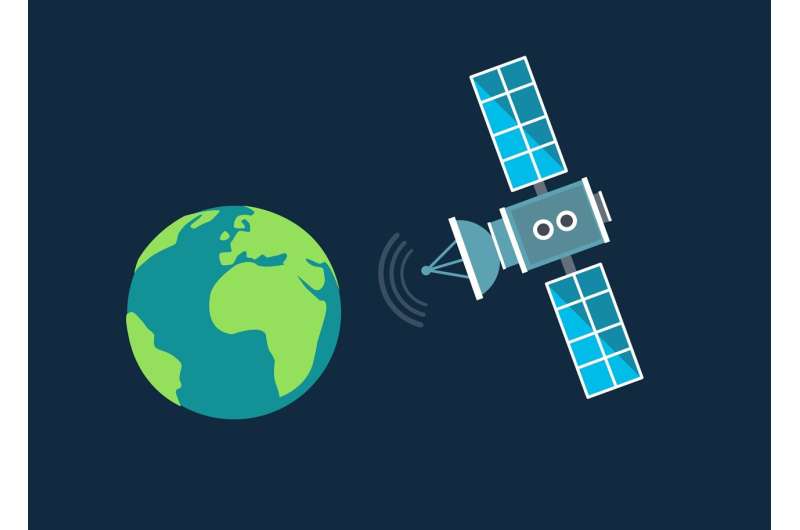This article has been reviewed according to Science X's editorial process and policies. Editors have highlighted the following attributes while ensuring the content's credibility:
fact-checked
reputable news agency
proofread
NOAA satellites can track hurricanes and hundreds of missing people sending SOS signals

Imagine being in a boat miles from shore when the engine fails, or getting lost in a remote spot while hiking in the Rocky Mountains. Having a beacon or transmitter that sends a distress signal via satellite could mean the difference between life and death.
The same satellites that send compelling images when massive hurricanes approach land or huge icebergs break off in Antarctica also play a crucial role in helping to find and rescue people from potentially life-threatening situations like these.
Activating a device that sends an emergency signal can mean the difference between a search that takes a few hours or a search that could take days, if it's successful at all.
Last year, satellite technology helped rescue 397 people throughout the nation and surrounding waterways, according to information provided by the National Oceanic and Atmospheric Administration and the National Aeronautics and Space Administration. That's 67 more than last year, but below the record high of 421 U.S. rescues in 2019.
How do satellites help rescue people?
When a lost hiker or a sinking boater turns on an emergency distress beacon, it sends a signal that can be detected by the global Search and Rescue Satellite Aided Tracking system.
The program "truly takes the 'search' out of search and rescue," stated Steve Volz, assistant administrator for NOAA's Satellite and Information Service.
Distress signals beamed from aircraft, boats and handheld personal locator beacons are detected by a network of U.S. and international spacecraft and used to send rescuers.
Since its beginnings in 1982, the network has supported more than 50,000 rescues worldwide.
When a satellite picks up a distress signal, it's related to NOAA's Satellite Operations Facility in Suitland, Maryland, then dispatched to coordination centers staffed by the Air Force for land rescues or the Coast Guard for water rescues.
Water rescues occur most often
Of the 397 rescues in the nation last year, 275 were water-related, while 42 were from downed aircraft. Personal locator beacons were used in 80 land rescues.
The 106 rescues in Florida were the most of any state. Fifty-six were in Alaska and 20 in Utah. The rescues included:
- A group of 17 hikers who were lifted to safety after being stranded on a backcountry hike in Sandthrax Canyon, Utah, thanks to a personal beacon.
- Seven rescued in November near Bethel, Alaska, after the Alaska Rescue Coordination Center got the coordinates of a commercial plane forced to land on a frozen lake when its engine failed.
- A man who grabbed his life raft and activated a beacon in August when his boat capsized and sank off the coast of New Smyrna Beach, Florida. He was lifted to safety by a Coast Guard helicopter.
How to buy a beacon that connects to satellites
Emergency transmitters and beacons, which—unlike your mobile phone—don't rely on cellular networks, range in price and are sold online and at outdoor stores. Registering a beacon with NOAA is required by law and it may help rescuers to find you faster. It also allows responding agencies to check and eliminate false alarms, without sending a rescue squad unnecessarily.
Since its investigation into the sinking of the El Faro shipping vessel in 2017, the National Transportation Safety Board has recommended at least four times that the Coast Guard require emergency beacons for crew members on ocean-going vessels.
The "lifesaving promise of PLBs (personal locator beacons) cannot be overstated," board chair Jennifer Homendy said last fall. She also stated: "We cannot—must not—wait any longer. I'm urging all mariners and their employers not to wait; you can improve safety today."
In December, Apple introduced a feature in its iPhone 14 and 14 Pro that allows users to signal a satellite in an emergency. The feature is available to users as a free service for two years.
NASA used similar newly developed technology to track the Artemis I Orion Capsule when it splashed down into the Pacific Ocean in December. The agency stated the technology also will be essential for future moon missions by astronauts. In coordination with other systems, it could provide distress location services for missions on the lunar service and provide internet-like capabilities for humans stationed on the moon.
2023 USA Today.
Distributed by Tribune Content Agency, LLC.



















